The PCGS Early American Coins and Tokens Basic Design Set 1616-1820 (We're Done!)
Based on some sort of Snapfish implosion, the images in this thread turned into red rectangles for me and other viewers. So I am redoing it (slowly). About 10 coins to go now:
1652 Oak Tree Shilling:
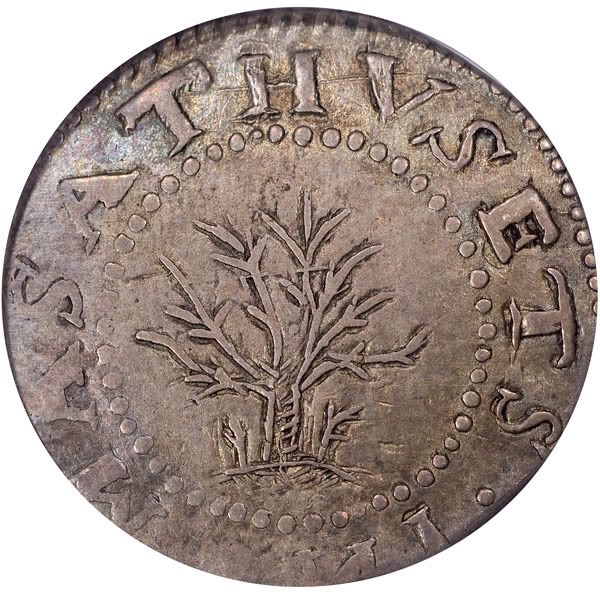
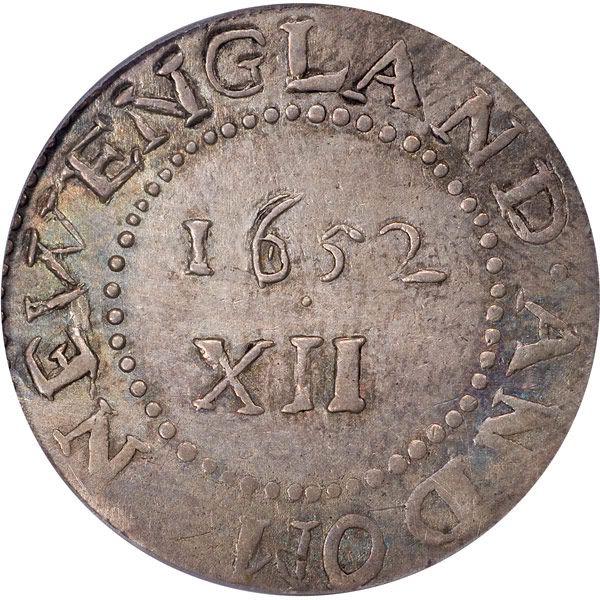
1652 Pine Tree Threepence:
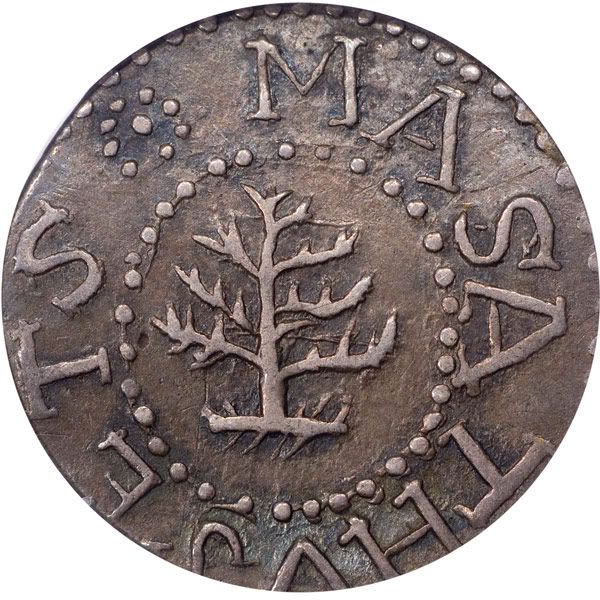
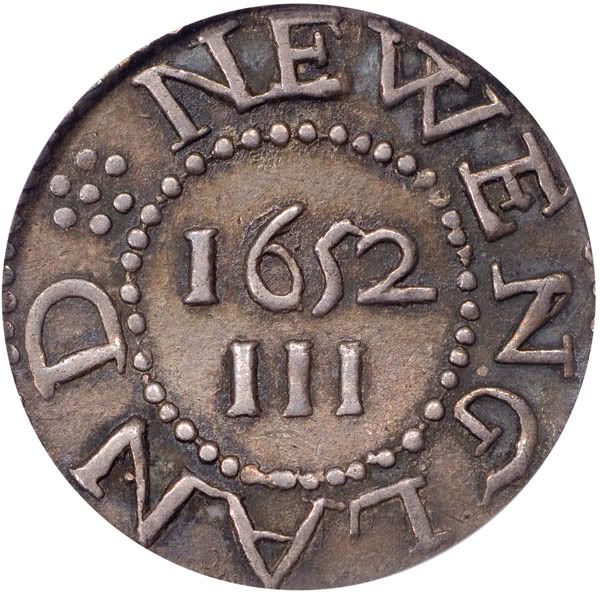
(1659) Maryland Lord Baltimore Sixpence:
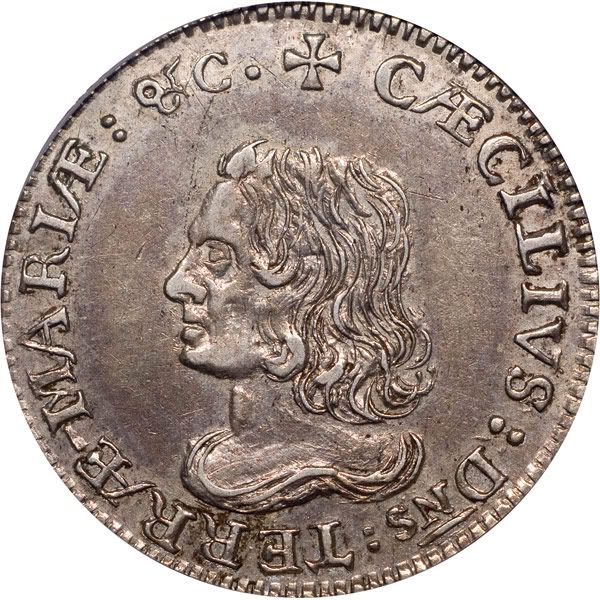
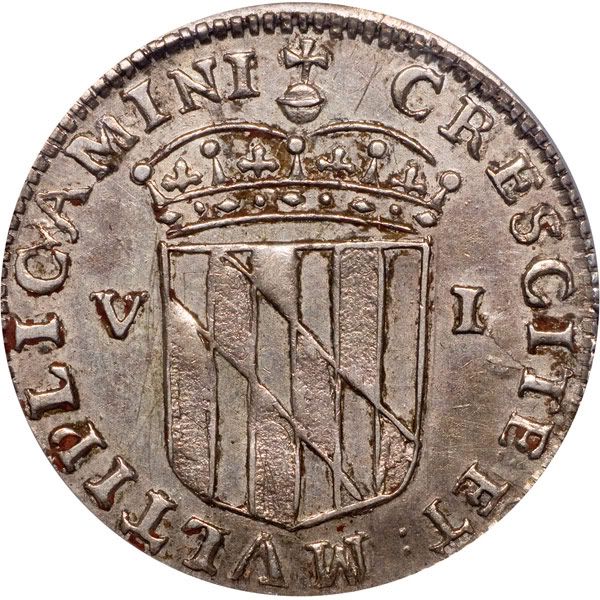
St. Patrick Halfpenny:

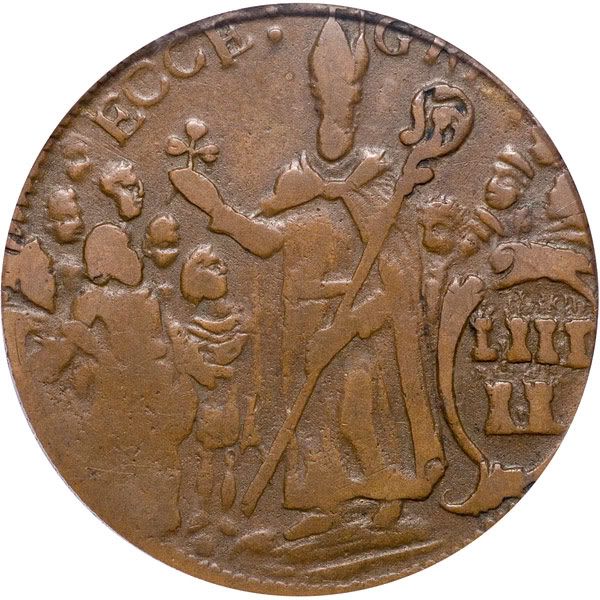
(1688) American Plantation Token:
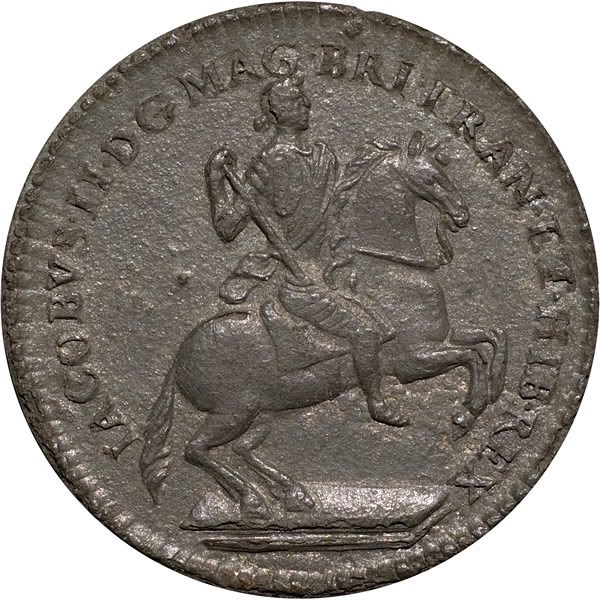
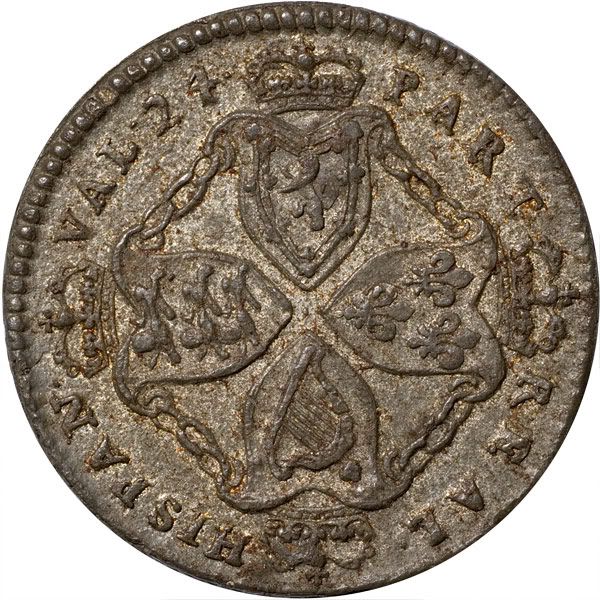
1723 Rosa Americana Penny:

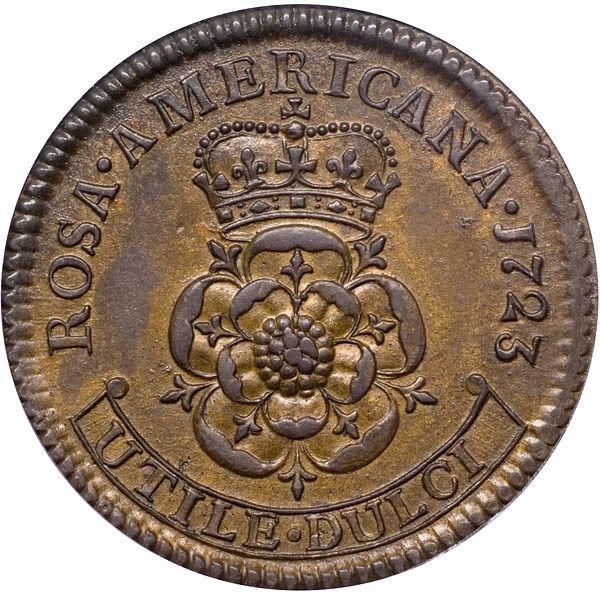
1723 Hibernia Halfpenny:
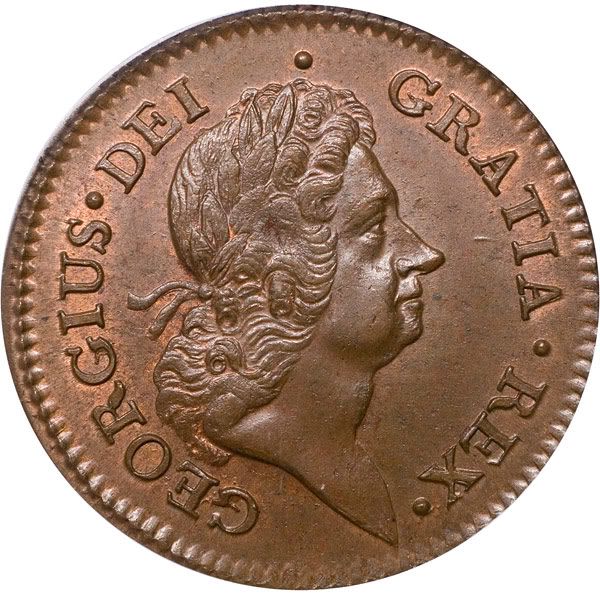
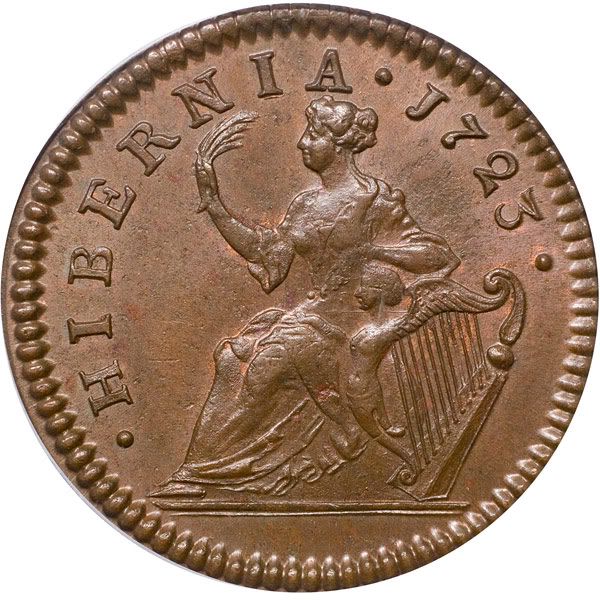
1773 Virginia Halfpenny, Period After Georgius:
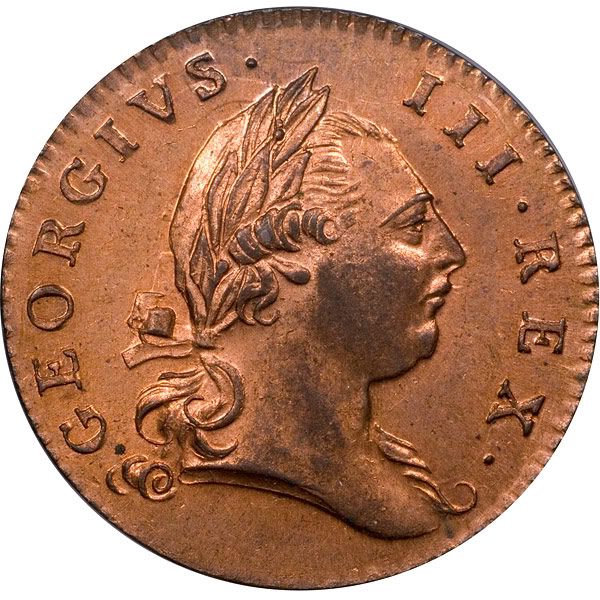
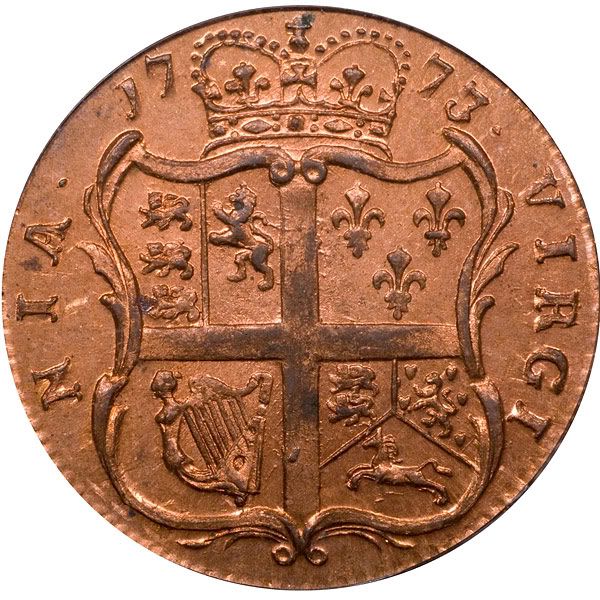
Elephant Token, Thin Planchet:
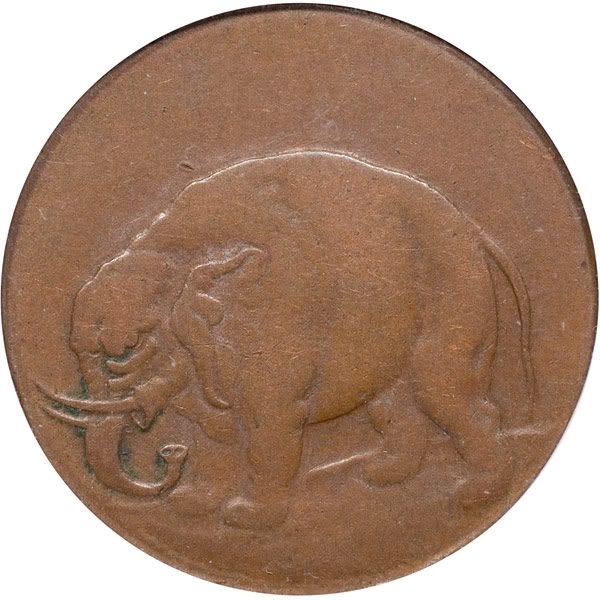

1737 Higley Copper, Broad Axe:
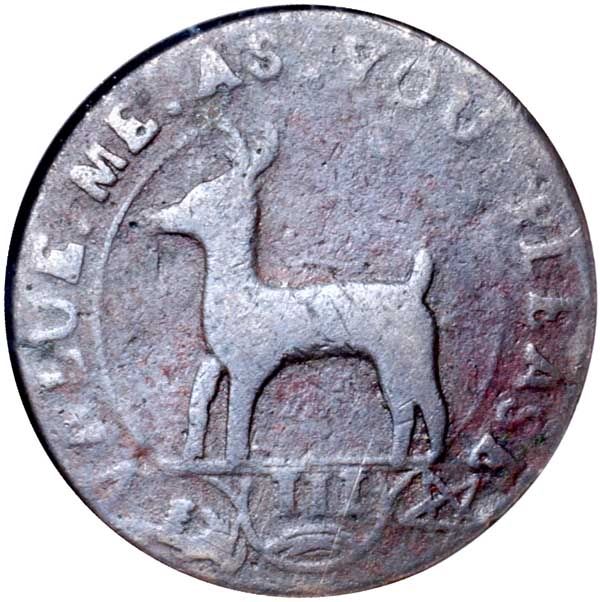

1760 Voce Populi Halfpenny, Long Nose, Nelson 8:
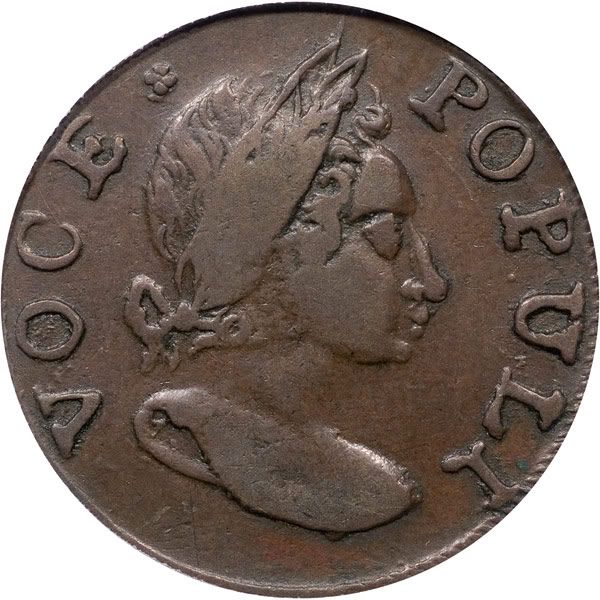

1766 Pitt Halfpenny:
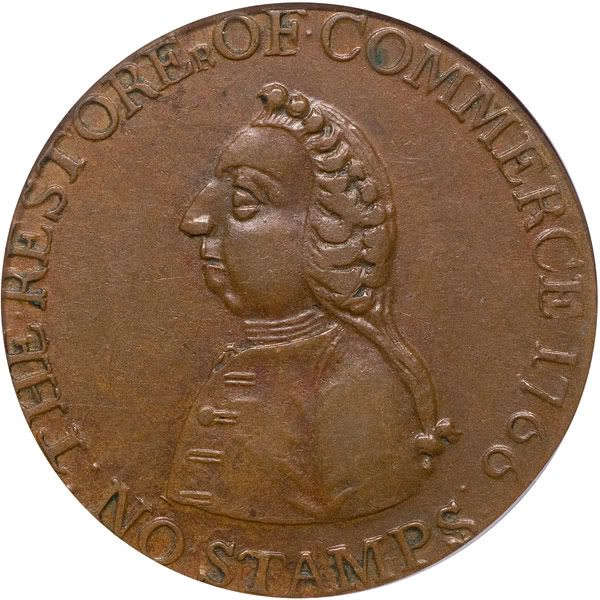
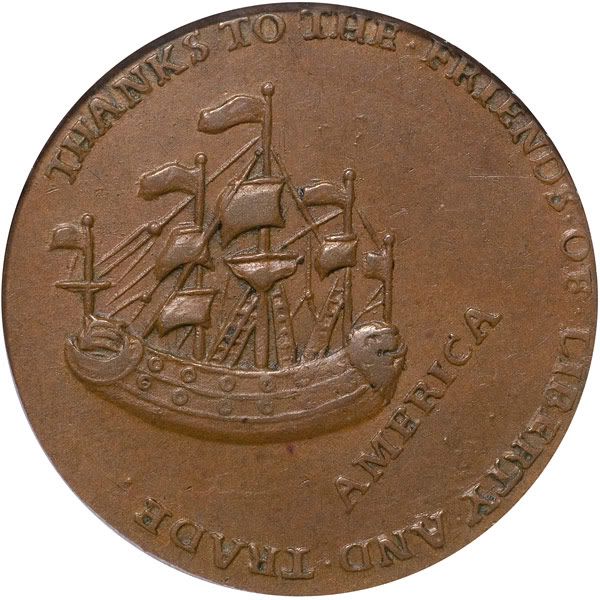
1778 / 1779 Rhode Island Ship Medal:
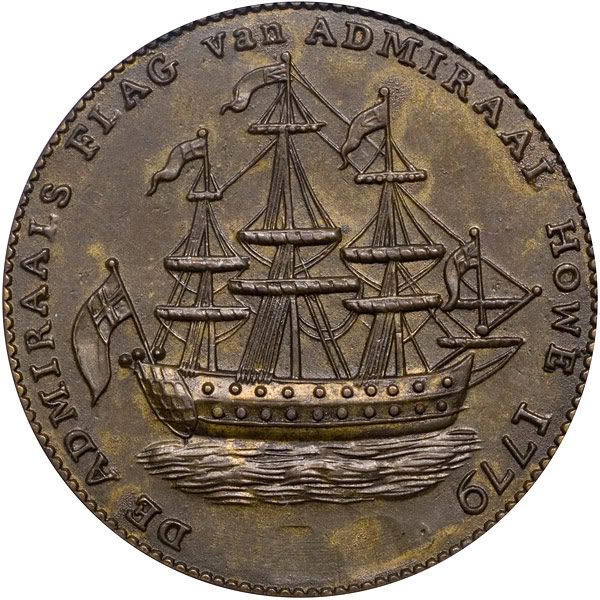

1783 Chalmers Shilling, Short Worm:

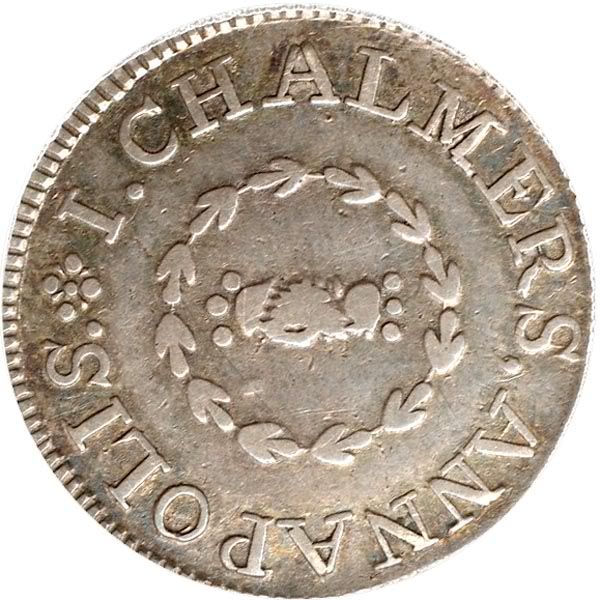
1738-A French Colonies Sou Marque
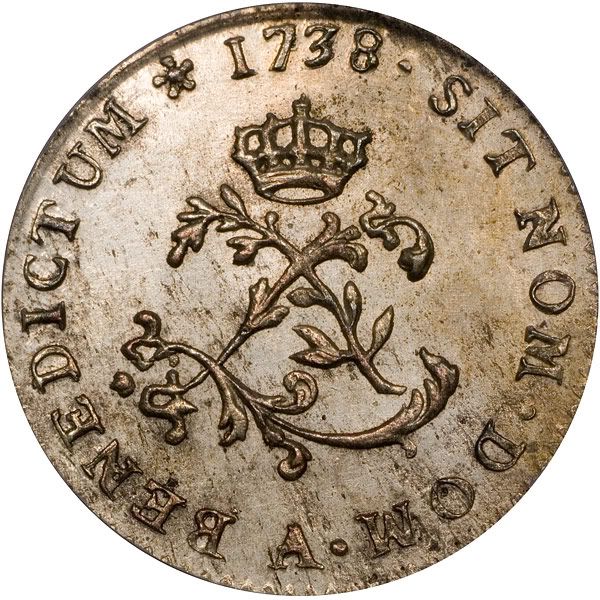

1767-A French Colonies Copper Sou
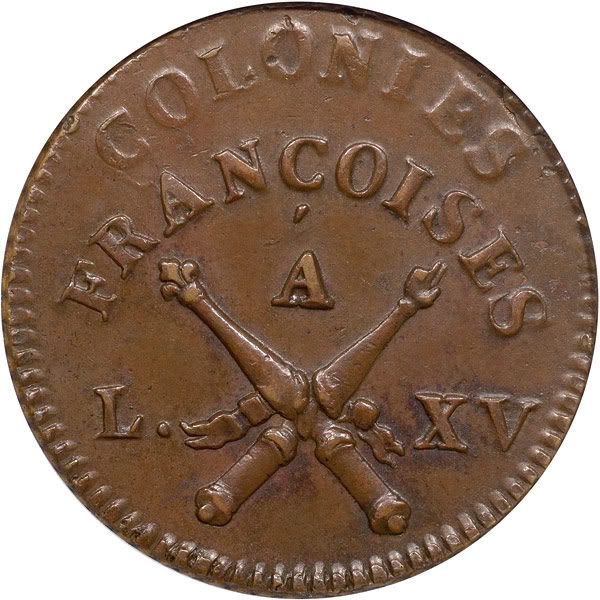

1776 Continental Dollar, CURENCY
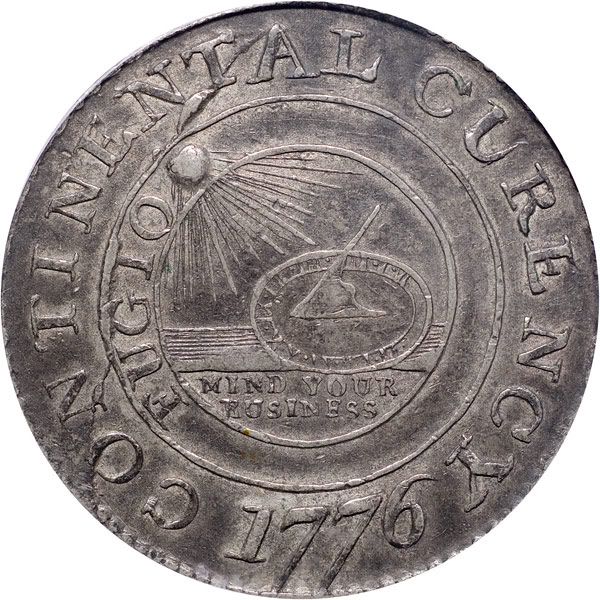
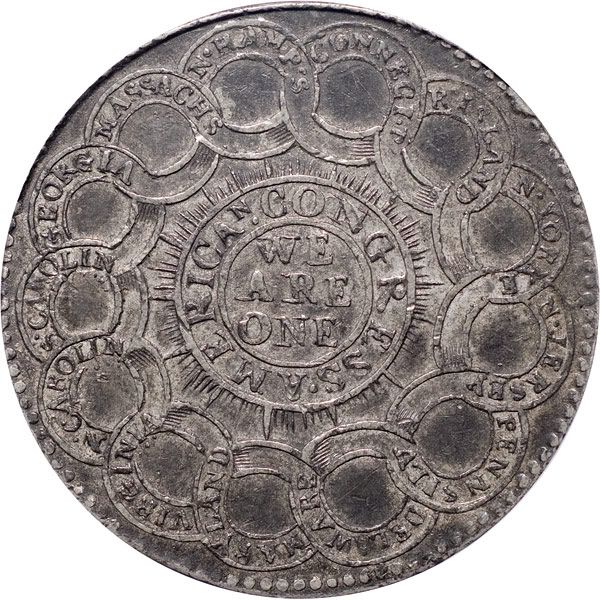
1785 Nova Constellatio
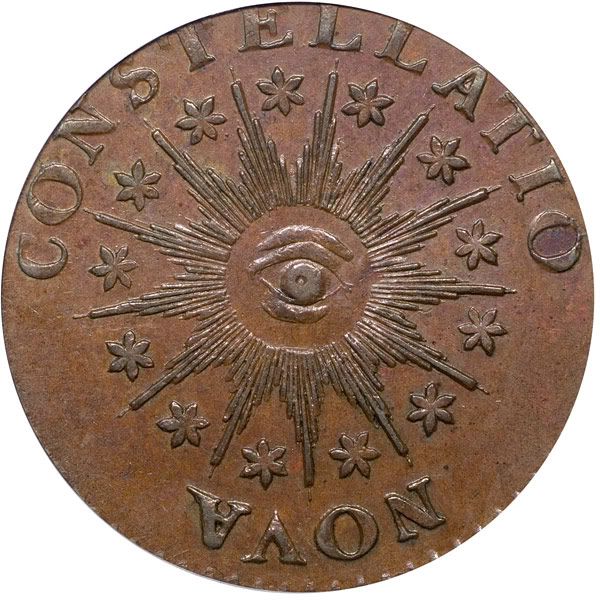
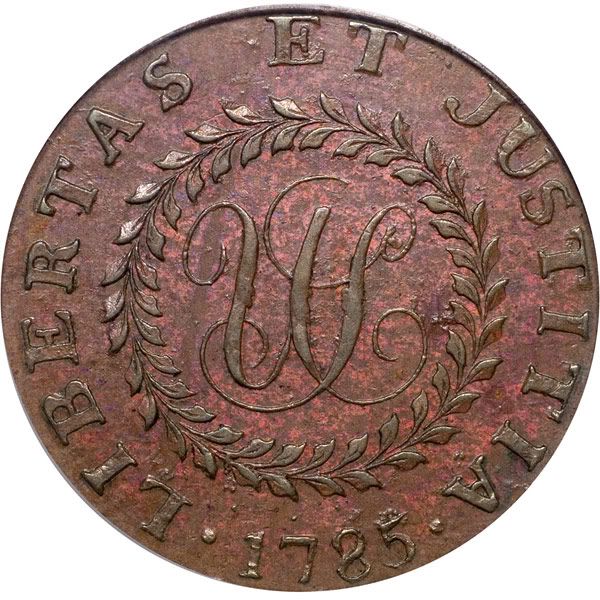
1787 Immunis Columbia
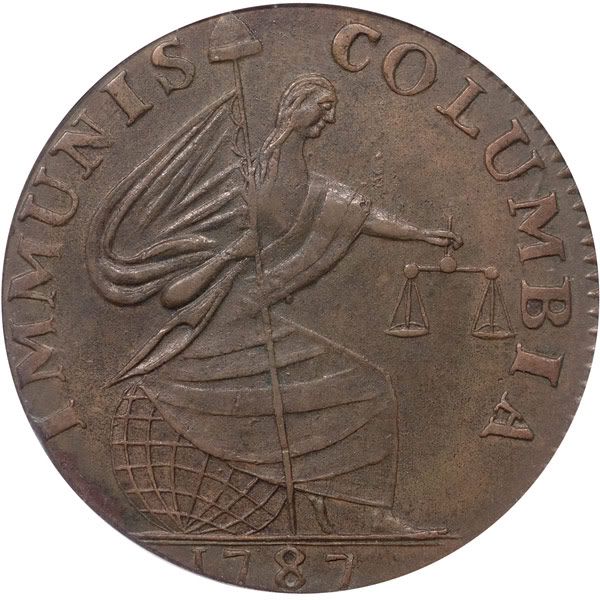
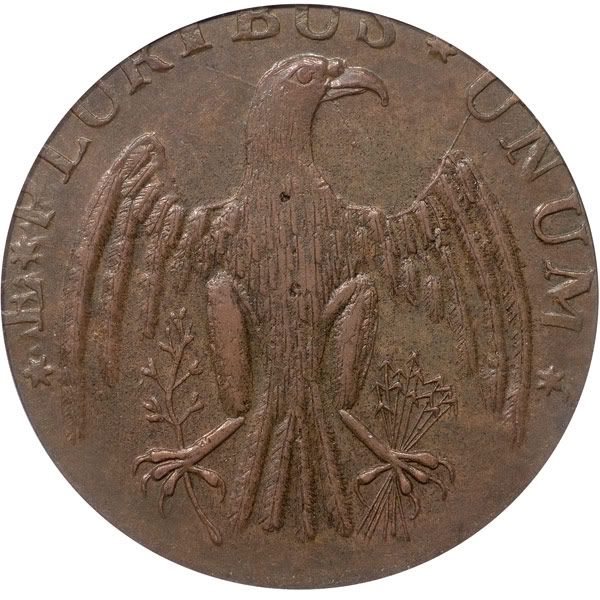
1787 Massachusetts Half Cent
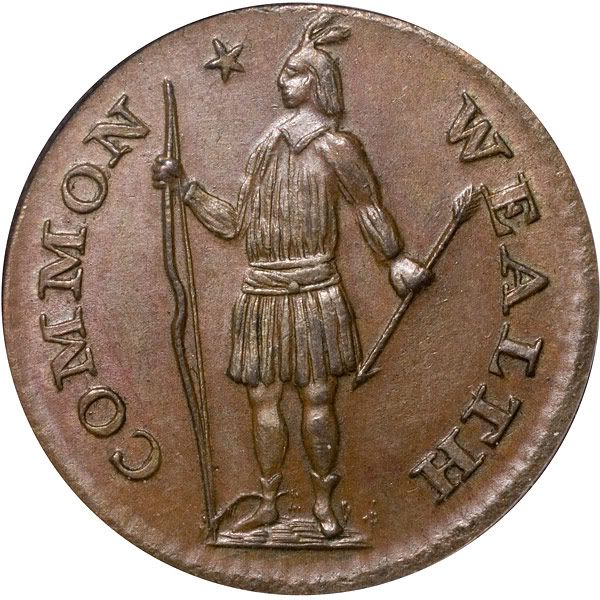

1785 Connecticut Mailed Bust Right
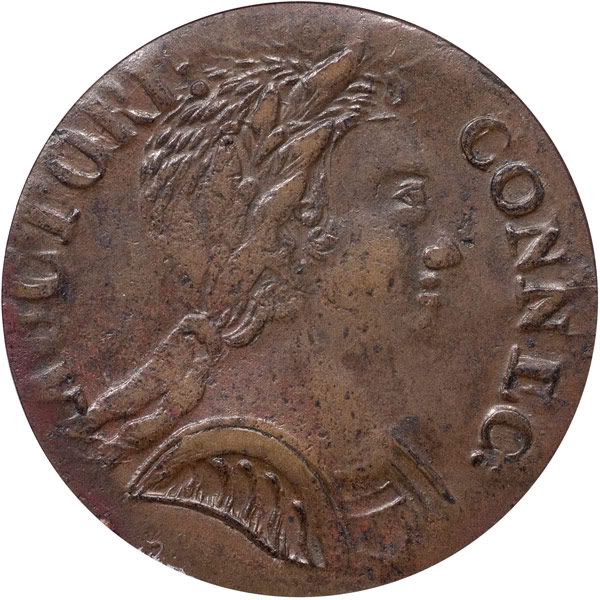
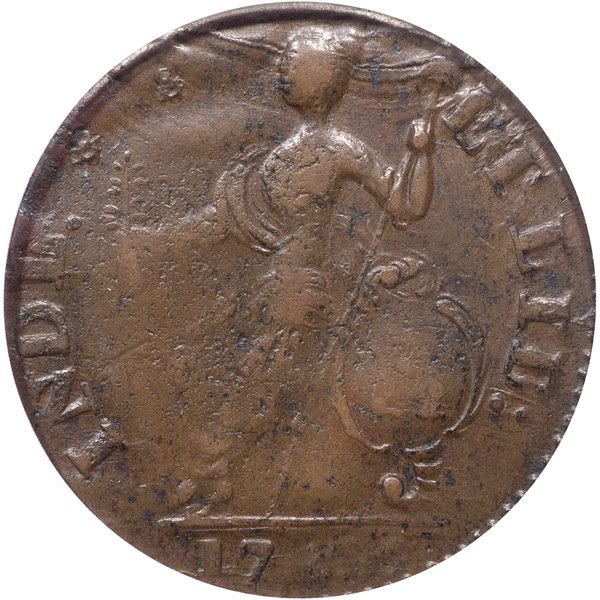
1787 New York Excelsior, Eagle Left
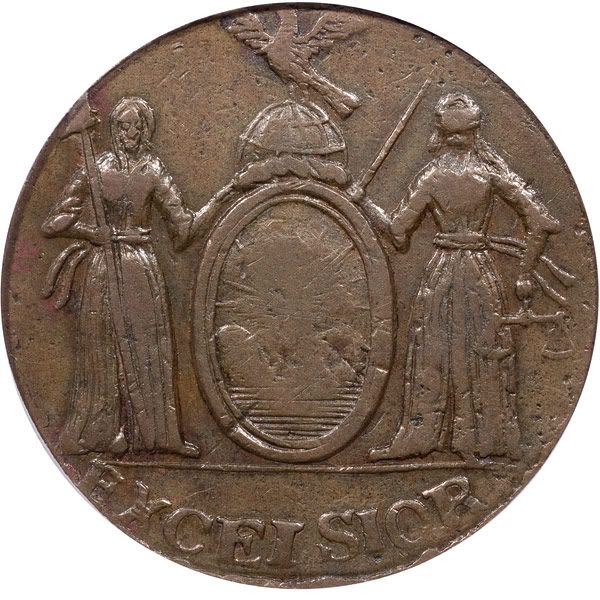

1787 Machin's Mills Halfpenny
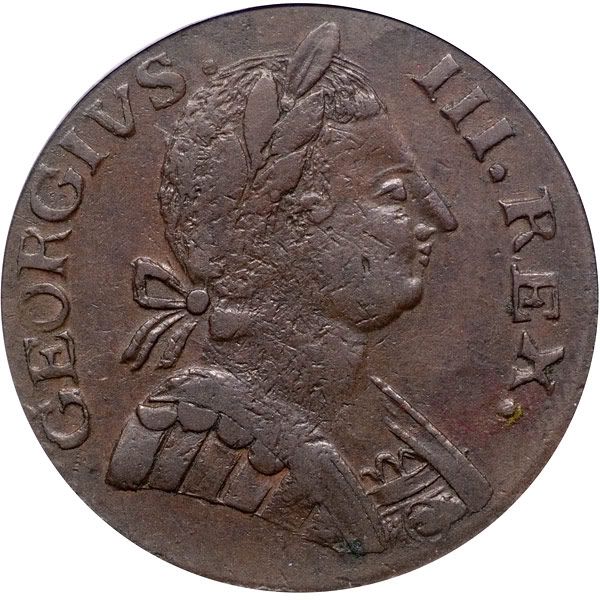
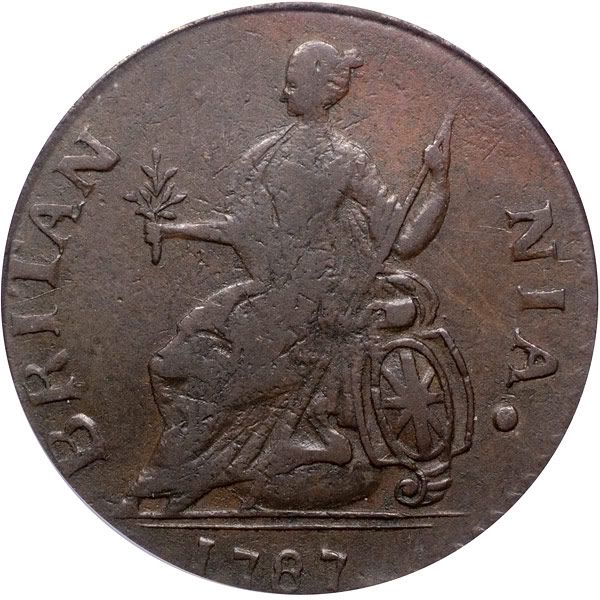
1787 Nova Eborac, Seated Left

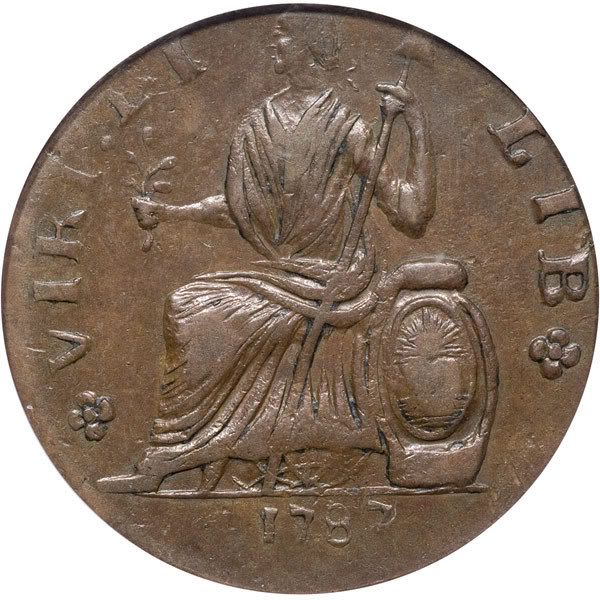
1788 New Jersey 'Head Left'
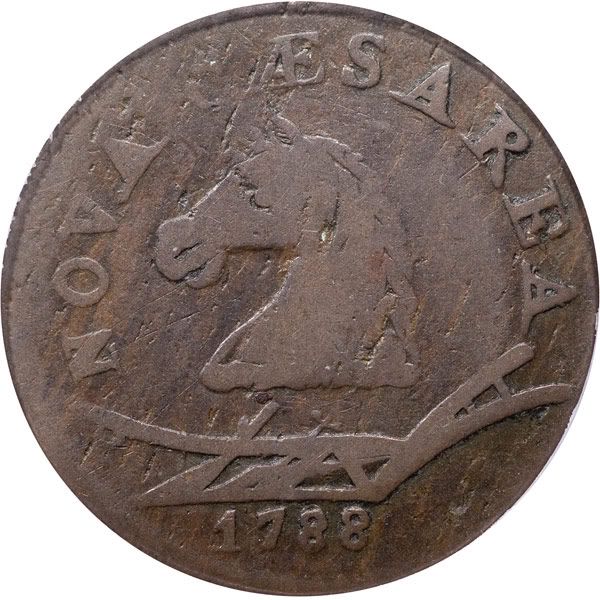
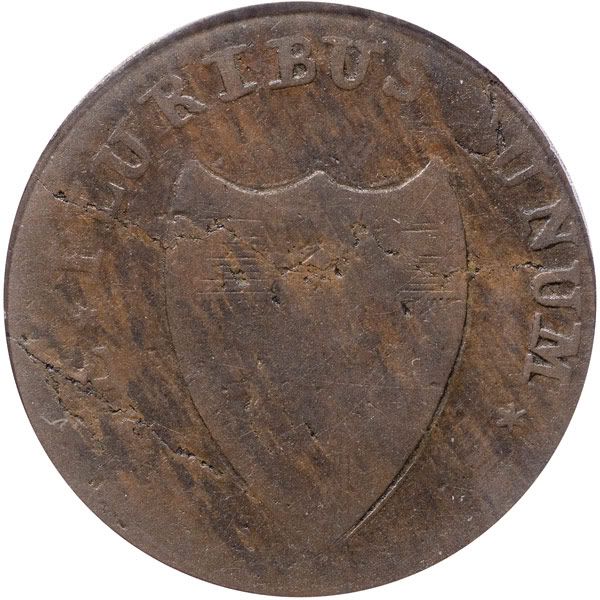
1786 Vermont 'VERMONTENSIUM'
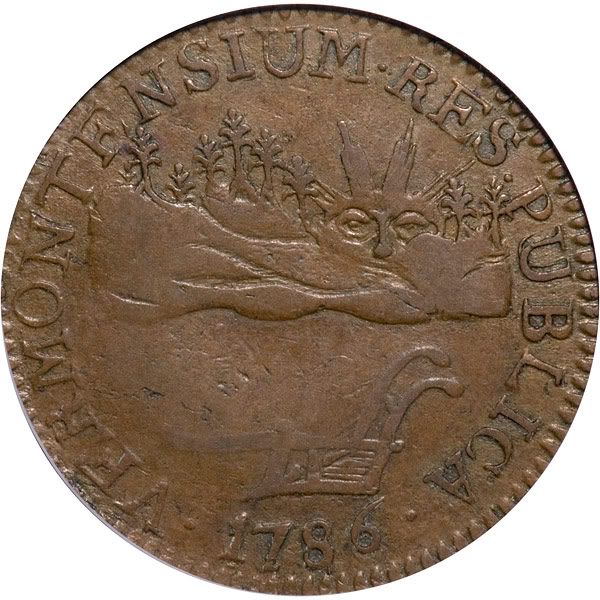
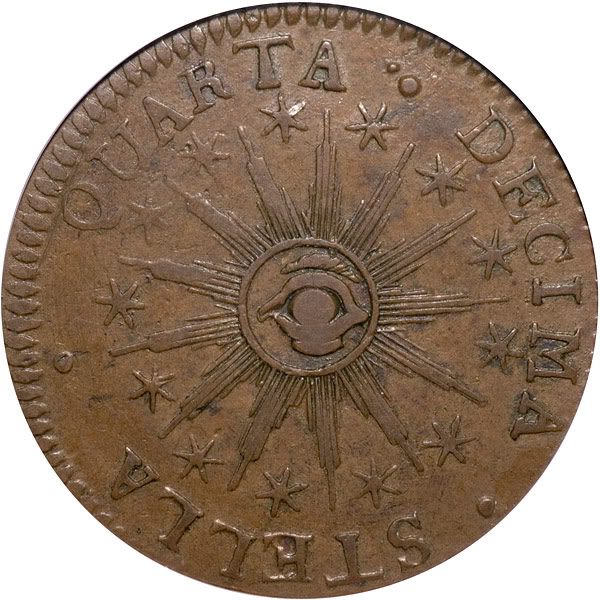
1787 Vermont Bust Right

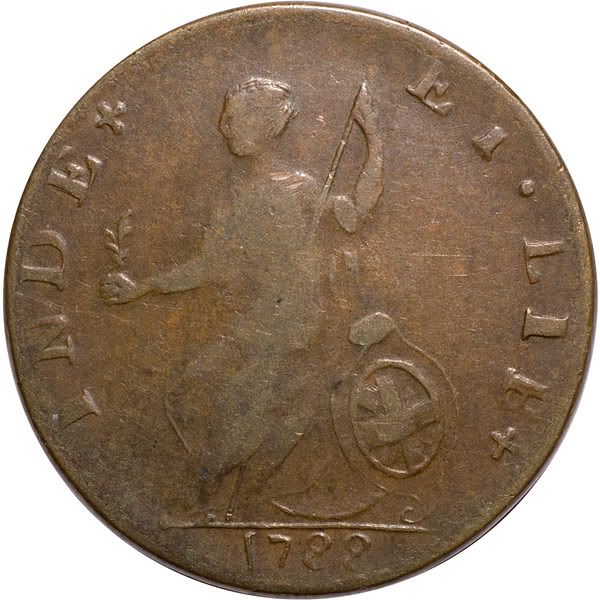
1781 North American Token
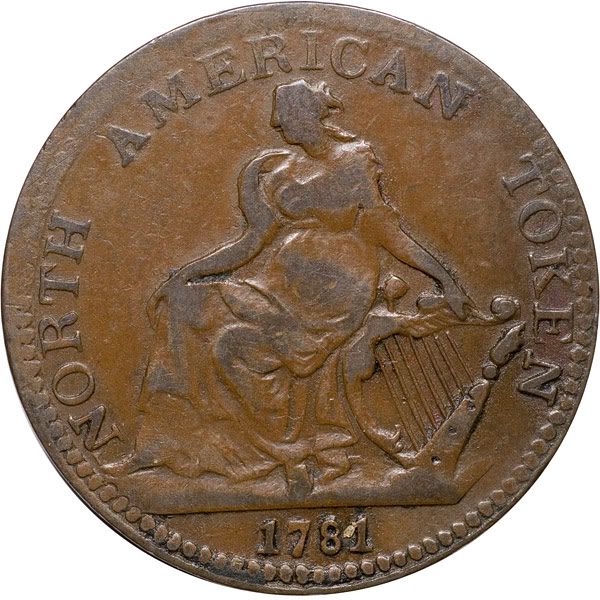
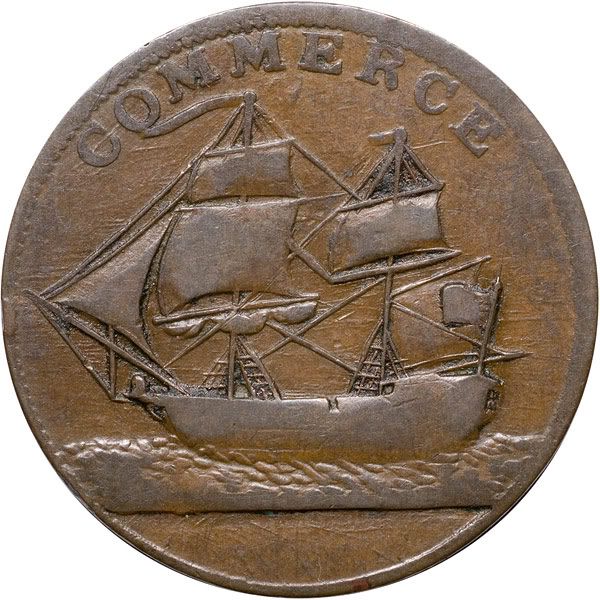
(1785) Bar Cent
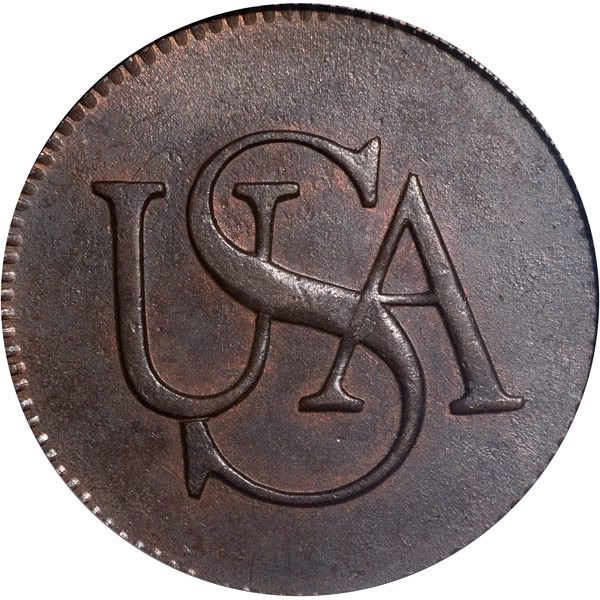
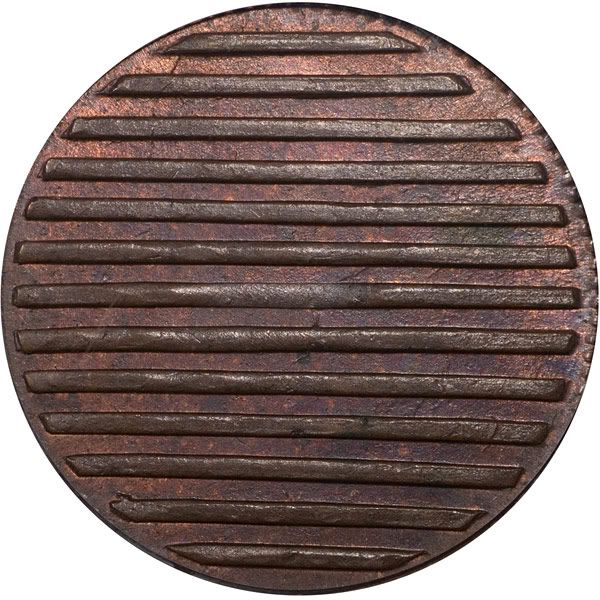
1787 Auctori Plebis Token

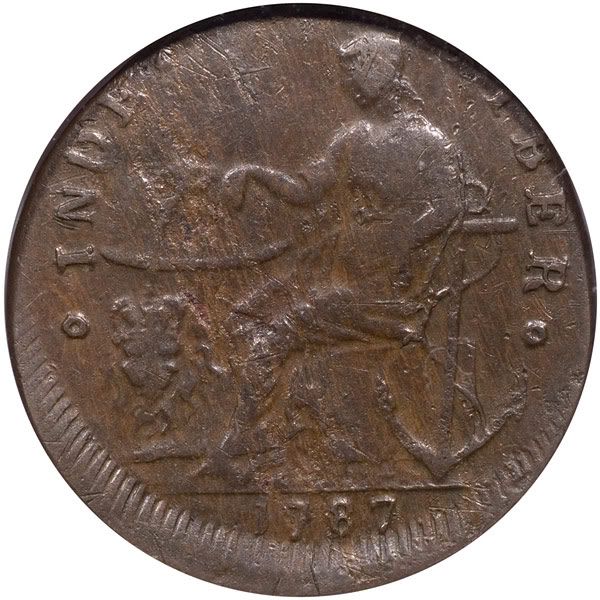
'1789' Mott Token, Thin Planchet, Engrailed Edge
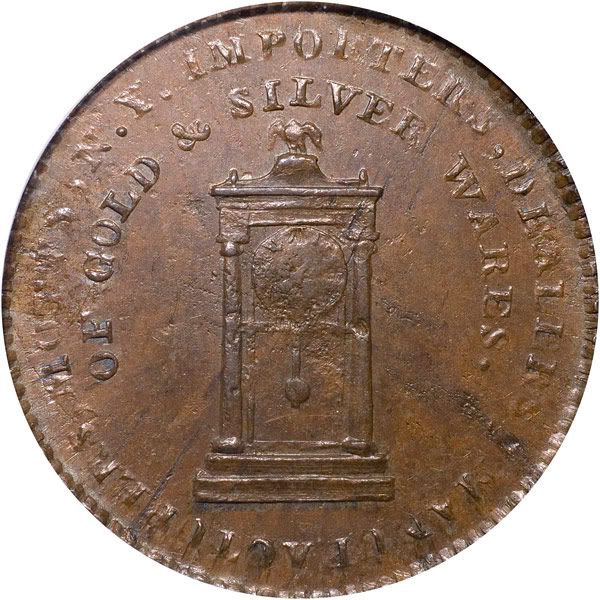

1792 Kentucky Token

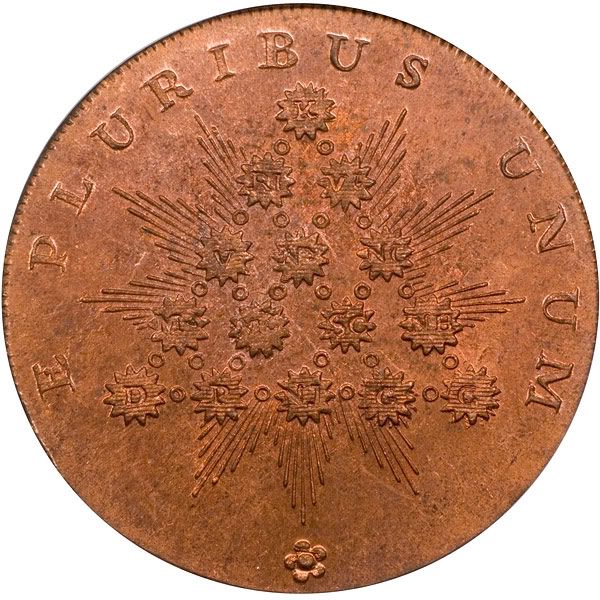
1794 Franklin Press Token
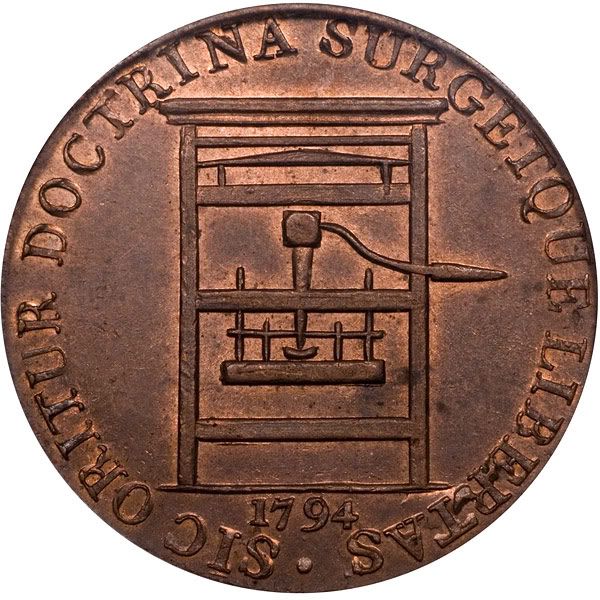
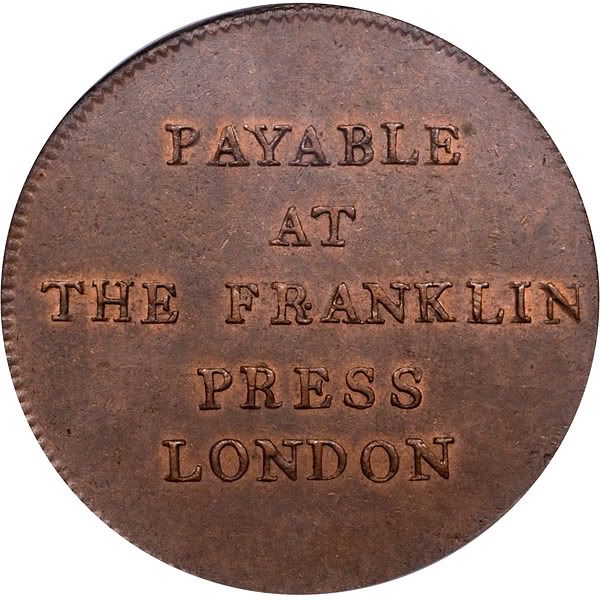
1796 Myddelton Token, Silver
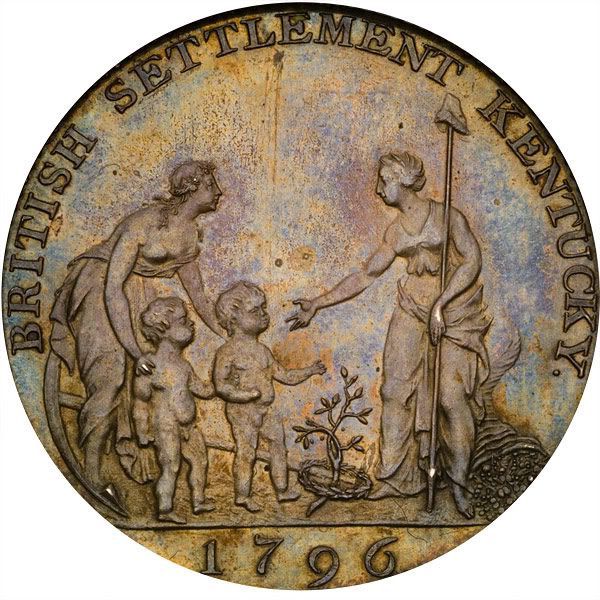
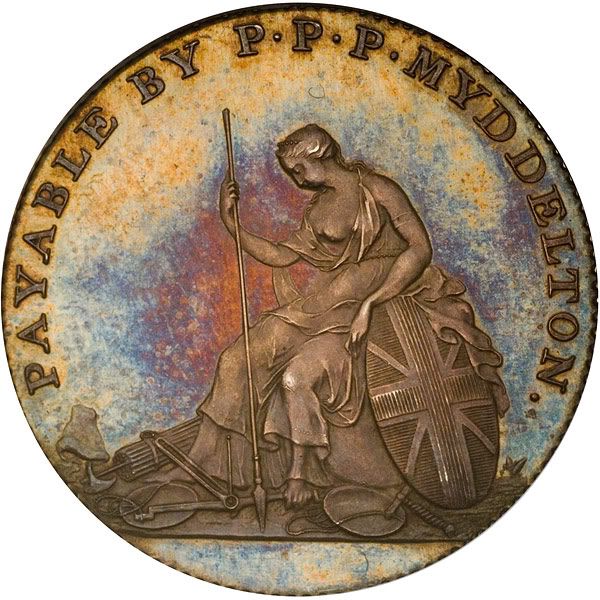
1796 Castorland Medal, Restrike in Gold
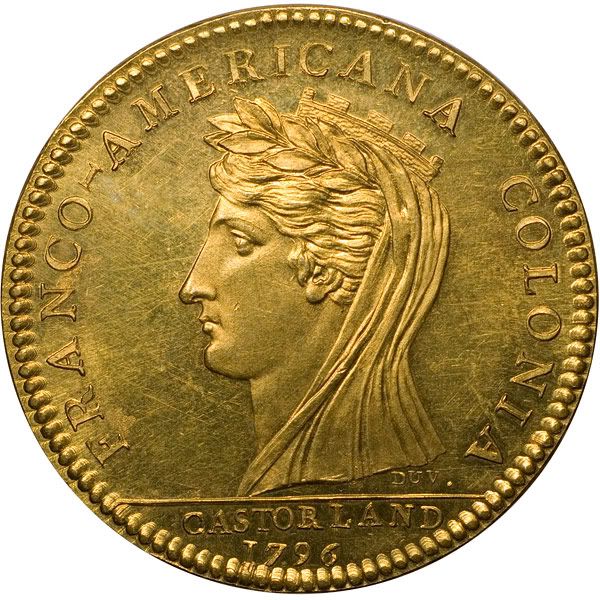

1795 Talbot, Alum & Lee

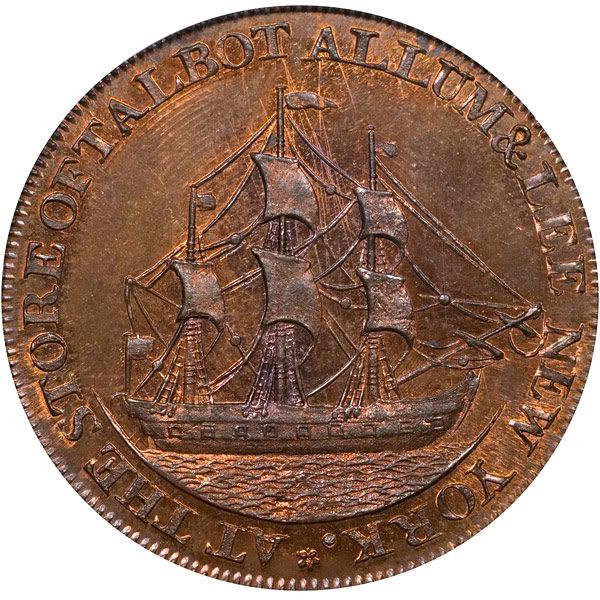
1783 Georgius Triumpho
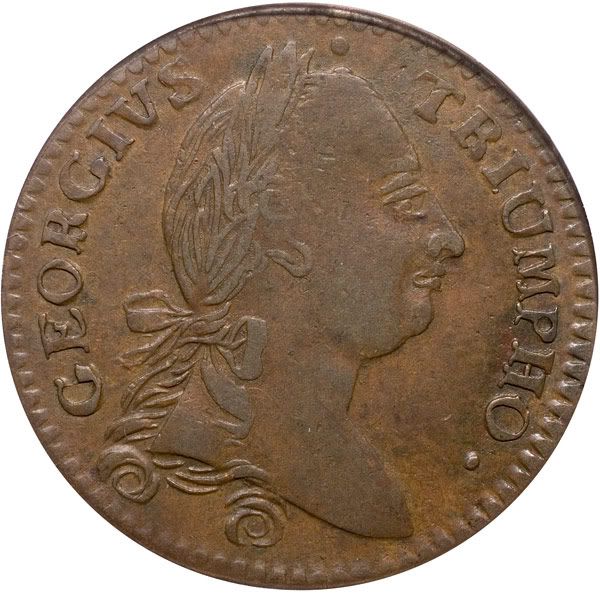
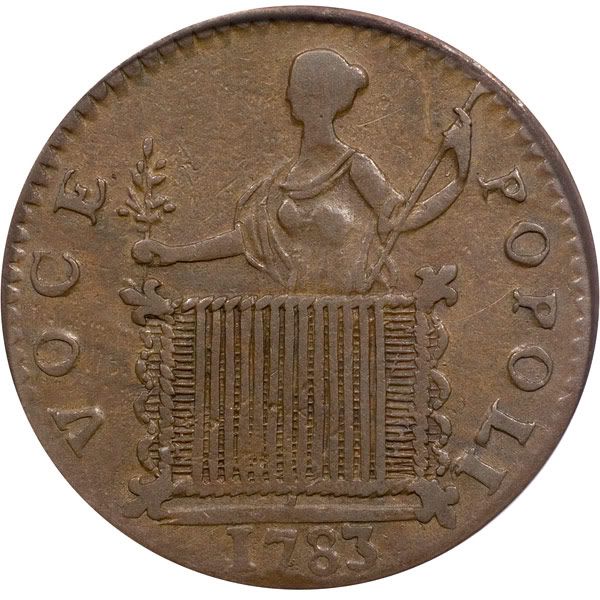
1783 Washington Large Military Bust

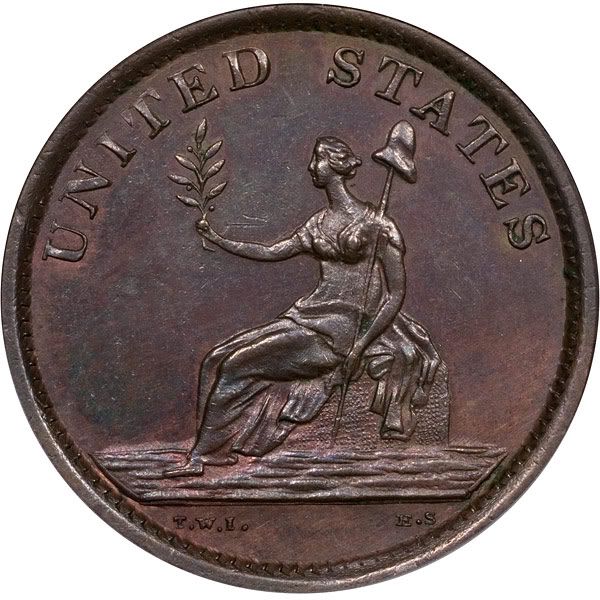
1783 Washington Unity States
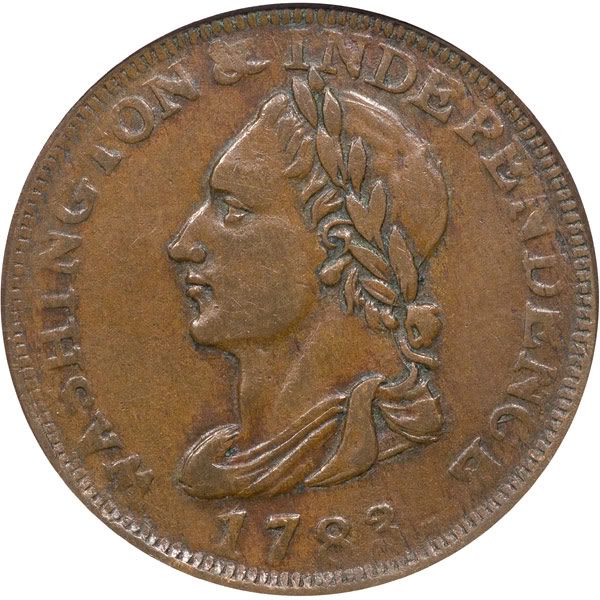
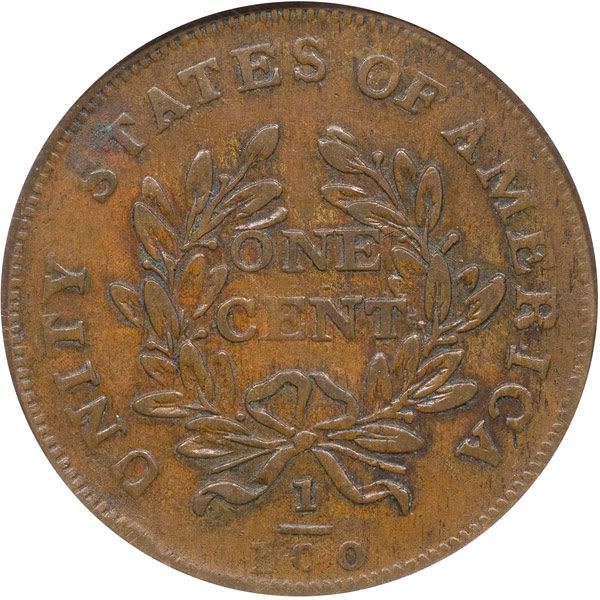
1791 Washington Small Eagle Cent
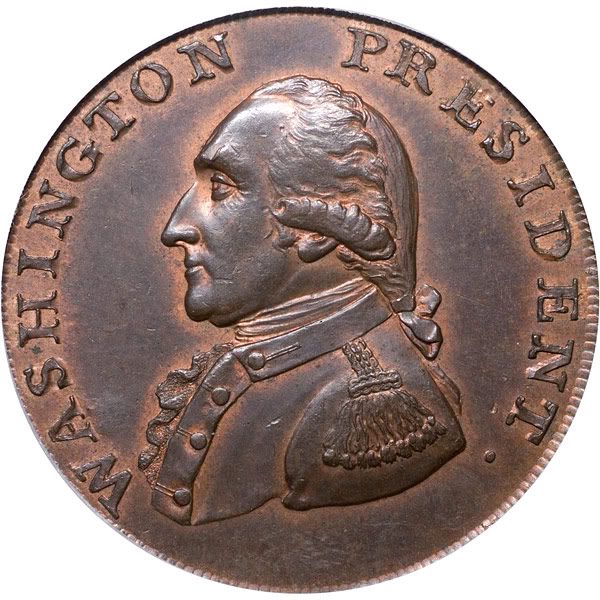
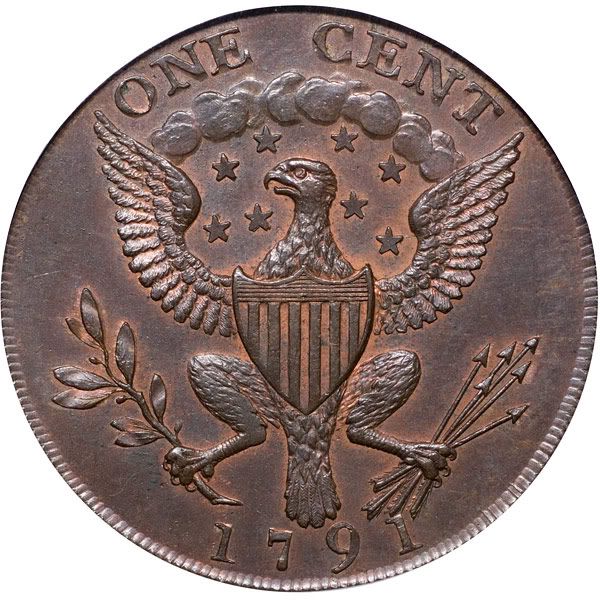
Washington Undated Liberty & Security Penny, Corded Rim
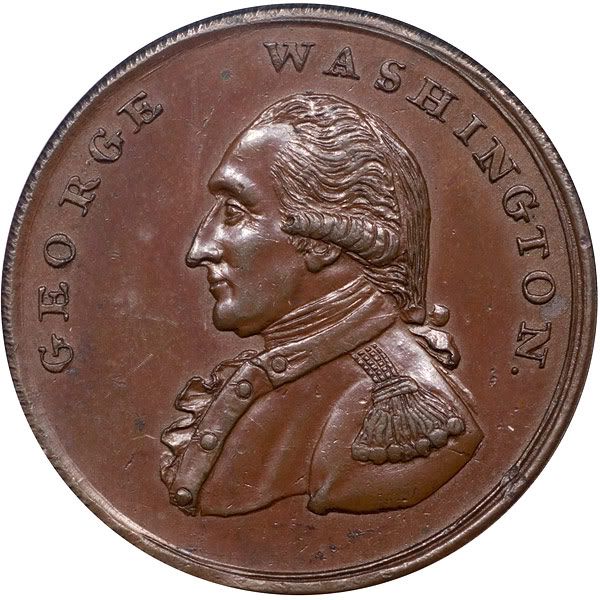
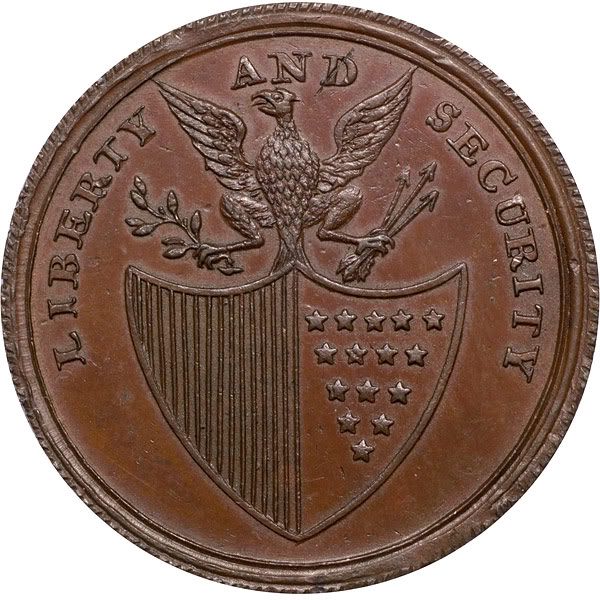
Washington Success Token, Large Size, Silvered

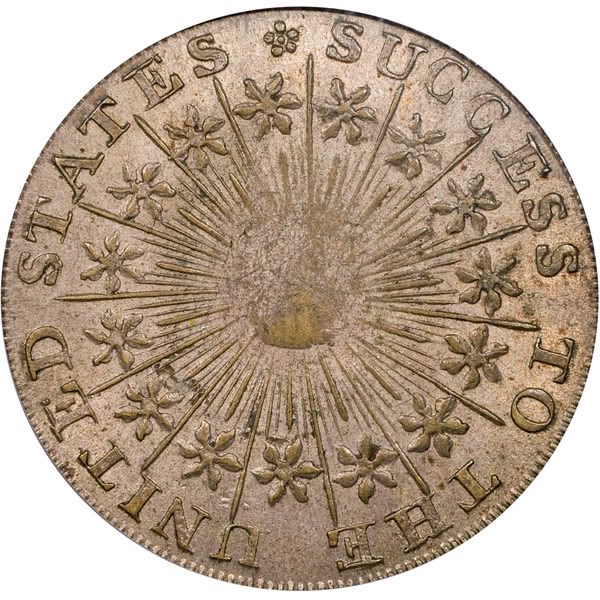
1787 Fugio Copper, United States
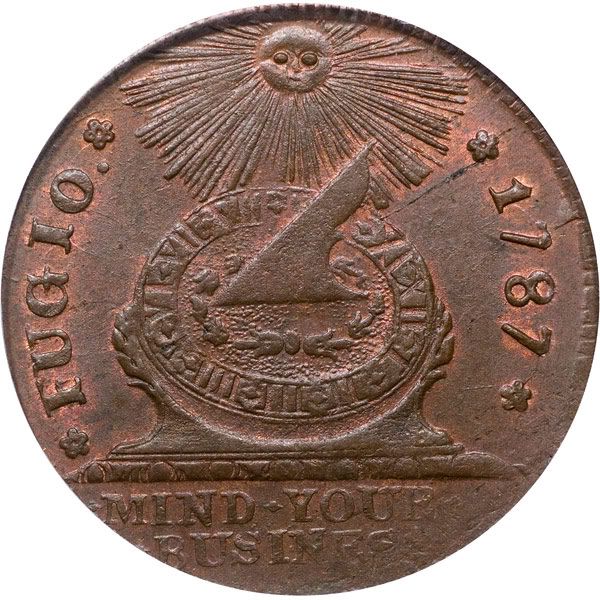
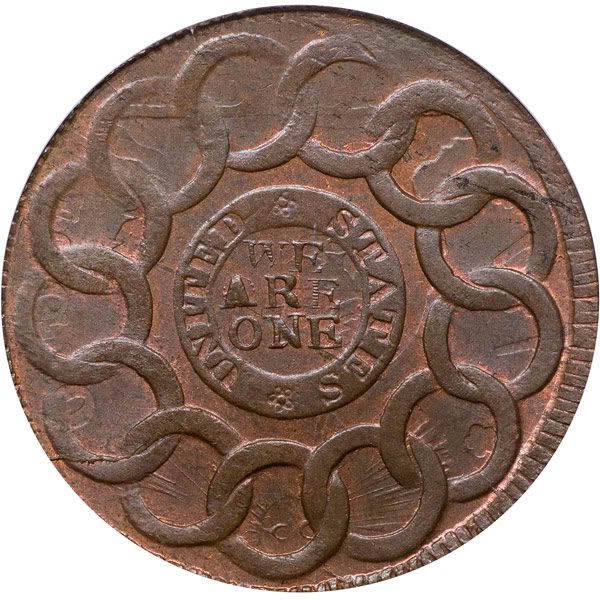
1652 Oak Tree Shilling:


1652 Pine Tree Threepence:


(1659) Maryland Lord Baltimore Sixpence:


St. Patrick Halfpenny:


(1688) American Plantation Token:


1723 Rosa Americana Penny:


1723 Hibernia Halfpenny:


1773 Virginia Halfpenny, Period After Georgius:


Elephant Token, Thin Planchet:


1737 Higley Copper, Broad Axe:


1760 Voce Populi Halfpenny, Long Nose, Nelson 8:


1766 Pitt Halfpenny:


1778 / 1779 Rhode Island Ship Medal:


1783 Chalmers Shilling, Short Worm:


1738-A French Colonies Sou Marque


1767-A French Colonies Copper Sou


1776 Continental Dollar, CURENCY


1785 Nova Constellatio


1787 Immunis Columbia


1787 Massachusetts Half Cent


1785 Connecticut Mailed Bust Right


1787 New York Excelsior, Eagle Left


1787 Machin's Mills Halfpenny


1787 Nova Eborac, Seated Left


1788 New Jersey 'Head Left'


1786 Vermont 'VERMONTENSIUM'


1787 Vermont Bust Right


1781 North American Token


(1785) Bar Cent


1787 Auctori Plebis Token


'1789' Mott Token, Thin Planchet, Engrailed Edge


1792 Kentucky Token


1794 Franklin Press Token


1796 Myddelton Token, Silver


1796 Castorland Medal, Restrike in Gold


1795 Talbot, Alum & Lee


1783 Georgius Triumpho


1783 Washington Large Military Bust


1783 Washington Unity States


1791 Washington Small Eagle Cent


Washington Undated Liberty & Security Penny, Corded Rim


Washington Success Token, Large Size, Silvered


1787 Fugio Copper, United States


0
Comments
Coin's for sale/trade.
Tom Pilitowski
US Rare Coin Investments
800-624-1870
<< <i>Very cool (and scary that I can id more than half ). >>
Likewise.
Neat set and thanks a ton for sharing it.
a series to collect but early US was not my cup of tea. I appreciate where and when the coins circulated but I really prefer later US coins.
I am sure as you post more coins one or two I will recognize and
wish i could enjoy owning.
Images are outstanding.
"Inspiration exists, but it has to find you working" Pablo Picasso
<< <i>I looked at a few pictures when i first started looking around for
a series to collect but early US was not my cup of tea. I appreciate where and when the coins circulated but I really prefer later US coins. >>
It's an acquired taste, that's for sure.
But from my perspective, the history, variety, interesting motifs, absolute rarity and seeming value in comparison to federal issues is a awfully compelling.
A friend of mine who used to collect federal issues once told me that the challenge of colonials led him to collect them. Whereas many federal sets could be completed (given sufficient resources) in a single day on the bourse, a colonial set may well take years to complete no matter how much money and how many connections you have.
I think that's cool.
<< <i>Did George II have a goiter? I'm serious.
It is called the Goiter variety, but other varieties of this type show him in perfect health, so I attribute old George's condition to bad die engraving.
Didn't wanna get me no trade
Never want to be like papa
Working for the boss every night and day
--"Happy", by the Rolling Stones (1972)
<< <i>The only coin that detracts from the grouping so far is the Plantations token because it is a modern(relatively speaking) restrike. >>
Tough crowd. And a controversial issue. If we're lucky, Pistareen can weigh in and tell Vermon Auctori why the issue isn't colonial and doesn't belong in American colonial series at all, and then Vermon Auctori can tell us how to distinguish between an original and a restrike Newman 4-E variety.
More tomorrow!
Betts medals, colonial coins, US Mint medals, foreign coins found in early America, and other numismatic Americana
<< <i>Wish they were mine. Do you have any coins John Winthrop might have carried in his pockets? I did some studies in Early AM. Literature. I've been seeking something reasonably priced. . . you know the budget of a teacher. >>
13 generations ago, my gggggggggggreat grandfather, Robert Fletcher, came over with Governor Winthrop and was the first constable in the colonies. I have a lot of orignal lit from that era ... an interesting time
<< <i>L O V E that St. Patrick ... do you still have it???
This post will feature only coins which are in collections and thus not available lest I be accused of hawking our wares. Having said that, the Virginia Halfpenny image is off of our site and so I will replace it with a different one as soon as I can load it.
Which is a long way of saying that the St. Pats Halfpenny was sold about 8 months ago.
This type certainly is an Early American type coin. Unfortunately we do not have the final documentation from King James II. This coin does belong in the redbook much moreso than half of the other coins that are listed there. Another reason for it being an Early American type coin is that you have it photographed for us and your heading reads Early American Coins and tokens basic design set.
<< <i>I do not collect the restrike Plantation varieties and I understand that the weight and planchet quality is the main difference between the original and restruck 4-E. I do not want to have to explain this when I sell a coin because frankly I do not think that weight and planchet quality prove this case 100%. You would probably have to take a chip out of the coin and study its metal content. >>
Seems pretty cut and dried to me!
<< <i>I just stick with the varieties that are strictly original and those have the horse head under the G of MAG. >>
So you disagree with Eric Newman? And I must also assume that you eschew the Sideways 4 varieties (which do not have the head under the G) as 'not strickly original'?
<< <i>This type certainly is an Early American type coin. Unfortunately we do not have the final documentation from King James II. This coin does belong in the redbook much more so than half of the other coins that are listed there. >>
Let's wait for Pistareen's view, which doesn't jibe with your's.
A Higley and nobody even mentions it??
My favorite is the Pine Tree.
Nice counterfeits
<< <i>A Higley and nobody even mentions it??
My favorite is the Pine Tree.
Nice counterfeits
I'll get back to you in a few minutes - I'm busy sawing the American Plantation Token in half so I can study the planchet composition.
Didn't wanna get me no trade
Never want to be like papa
Working for the boss every night and day
--"Happy", by the Rolling Stones (1972)
The coins are fantastic. After I'm finished with my current collecting goals I'm very tempted to
dip into Colonials.
Thanks again for posting!
The things I usually use to measure how valid a coin's inclusion in the Redbook:
1) Specific authorization for the North American colonies, or designs that make such authorization clear.
----> Think Rosa Americana, Virginia halfpence, stuff like that.
2) Strong archaelogical evidence that suggests there was more than the occasional piece circulating in America.
----> The Wood's Hibernia pieces perhaps qualify on this basis, despite being Irish coins.
3) Actually struck as a coin to be circulated.
---> Your Rhode Island Ship MEDAL just failed.
By these standards, Plantation tokens fail. The only ones that I've ever heard of turning up in the dirt were found along the Thames. That's in England. The denomination, to me, suggests a Caribbean circulation -- Spanish denominations were not prominent in the future United States in the 17th century (used, yes, prominent, no) but they WERE in the West Indies. Further, the only original documentation I know of is of West Indian origin.
Now I'll really throw a wrench in the works -- in many ways, the Caribbean islands were considered "American" in the 17th century and early 18th century just as much as Massachusetts or Virginia, and they were all part of the same economic system. Thus the term "American Plantations," which tended to refer to the Carolinas and West Indies, where plantations were massive economies of scale and utterly dominated those landscapes.
So CCU, I'll agree with the words you put in my mouth AND I'll disagree. I like the American Plantations tokens as "American" more than some other things. Like Voce Populis.
PS -- I throw out the St. Pat's too, much to some folks' chagrin. Being authorized as legal tender or acceptable in commerce is not that same as being authorized for specific American circulation -- if it was, every Latin American coin would be in the Redbook. So would Transylvanian ducats (made legal tender by the Act of Congress of September 1776 but, mysteriously, not considered a colonial coin.)
Was that what you wanted?
Betts medals, colonial coins, US Mint medals, foreign coins found in early America, and other numismatic Americana
<< <i>CCU: I might be pushing it by this request, but would you mind adding some words about the pieces under each picture, just a bit of historical context and a few comments on condition, rarity, etc.? >>
I'll second that request.
The pictures...the discussions...the information provided by Pistareen and others...this is a great thread!
Didn't wanna get me no trade
Never want to be like papa
Working for the boss every night and day
--"Happy", by the Rolling Stones (1972)
One thang that always has bothered me a bit is the whole label of "colonial coins." For instance all the state authorized coinages like CT, MA, NJ and VT, were all struck after 1776 (Declaration of Independence) and 1783 (Constitution). These coins are all dated 1785-1788. Why are they considered "Colonial," since the US was already formed as an independent country? These were U.S. state coinages, not colonial issues. Heck, Vermont wasn't even one of the 13 original states, but was #14 as stated on the reverse of its coins "Stella Quarta Decima." I guess that's why CCU was very careful in the title of his thread to call these Early American Coins and Tokens, rather than colonial coins. It allows him to cast as broad a net as possible.
Here's the inconvenient part -- Matthew Young restruck multiple sets of dies in 1828, and those cracked dies were also used by him in their uncracked state. Thus, there are restrikes without the crack. It seems that some services will call anything without the crack an "original" on the holder, when that's not the case.
But it would be much easier if that was true!
Betts medals, colonial coins, US Mint medals, foreign coins found in early America, and other numismatic Americana
<< <i>Doctor Paper --
Here's the inconvenient part -- Matthew Young restruck multiple sets of dies in 1828, and those cracked dies were also used by him in their uncracked state. Thus, there are restrikes without the crack. It seems that some services will call anything without the crack an "original" on the holder, when that's not the case.
But it would be much easier if that was true! >>
While I've heard this before, I've always thought it a bit hard to believe that the original dies survived uncracked from 1688 to 1828, then were used by Matthew Young to strike some additional pieces, then cracked, then used to strike a few more coins.
I'm not saying it didn't or couldn't have happened, but it seems strange.
<< <i>Doctor Paper -- >>
<< <i>Here's the inconvenient part -- Matthew Young restruck multiple sets of dies in 1828, and those cracked dies were also used by him in their uncracked state. Thus, there are restrikes without the crack. It seems that some services will call anything without the crack an "original" on the holder, when that's not the case. >>
Yes, I had heard that as well, but I also understood that the planchets used by Young in 1828 were a little different as well, which is why I included that comment about the planchets, and I think that's why CCU made a comment earlier about being busy checking his coin's planchet composition. In fact, for anyone who is reading these very obscure comments, this is the reason why some of us find colonial coins so interesting-a lot of the "facts" that are "known" about them are pure conjecture and/or fable, or simply best guesses based on the available data. If you are interested in research, you actually can answer some of these issues by carefully studying die states, size and weight of planchets, styles of lettering, and planchet compostion by non-destructive analysis and specific weight. The results are often publishable and certainly always interesting.
<< <i>That 1739-A French Colonies Sou Marque is nice!
Yes - the buyer is very, very picky.